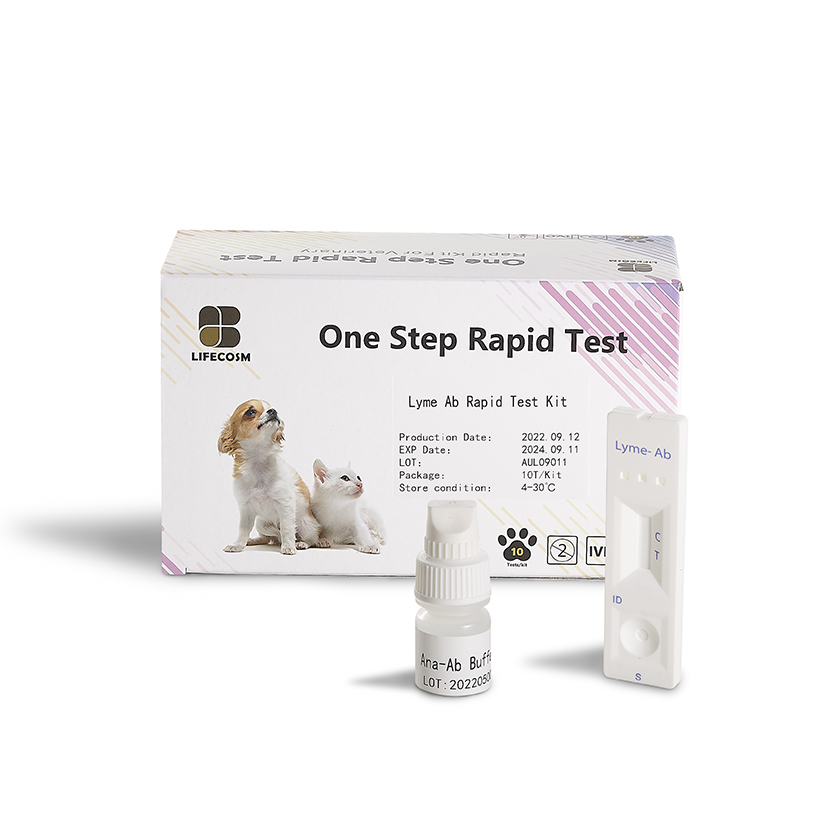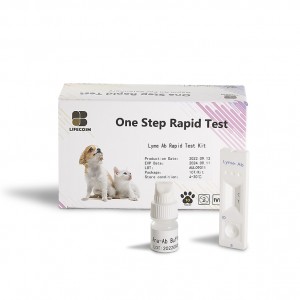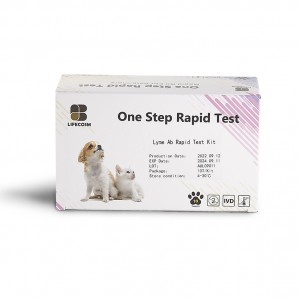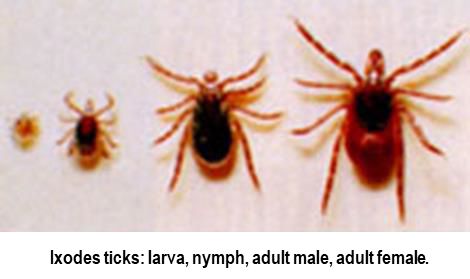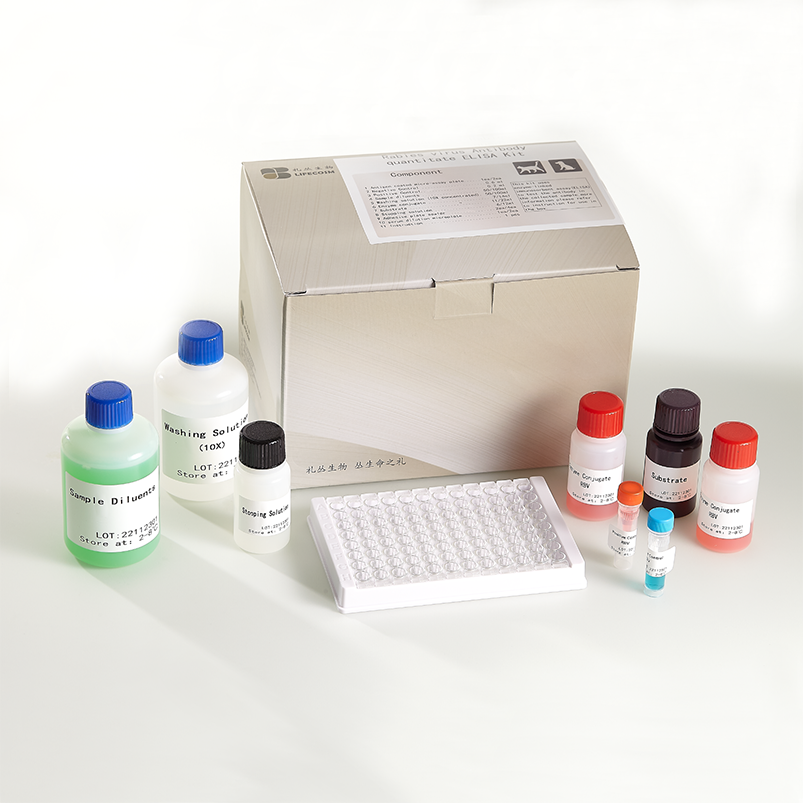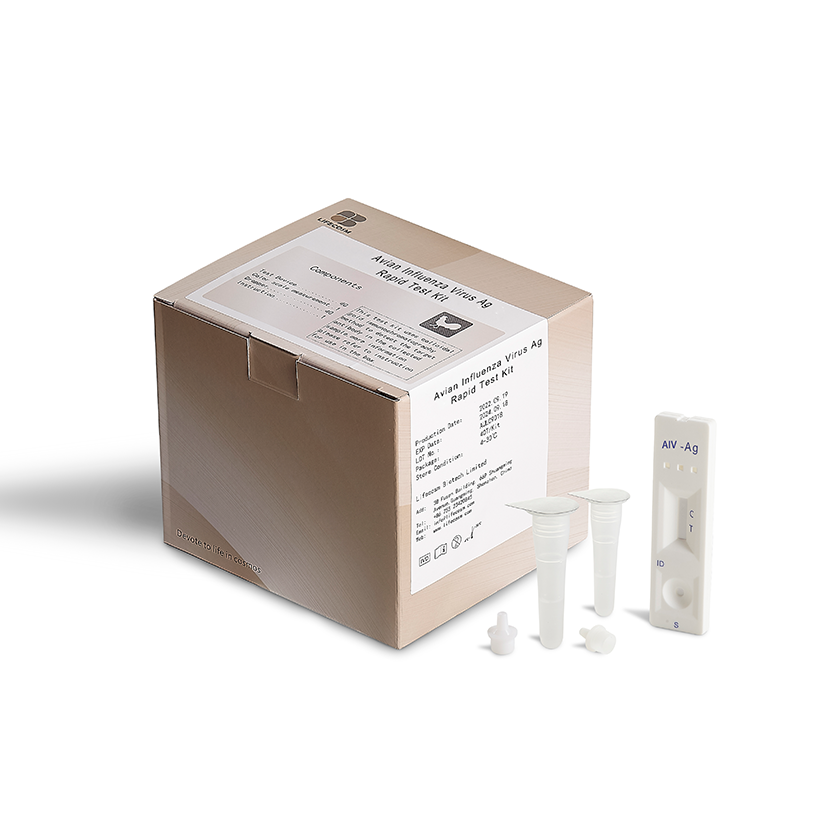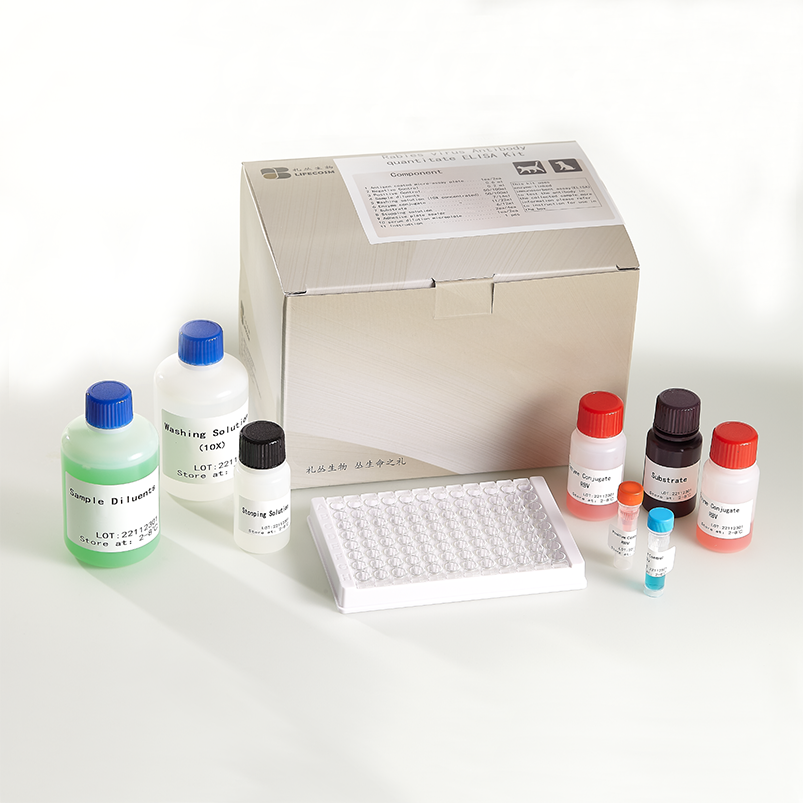
Products
Lifecosm Canine Lyme Ab Test Kit
Canine Lyme Ab Test Kit
| Catalog number | RC-CF23 |
| Summary | Detection of specific antibodies of burgdorferi Borrelia (Lyme) within 10 minutes |
| Principle | One-step immunochromatographic assay |
| Detection Targets | burgdorferi Borrelia (Lyme) antibodies |
| Sample | Canine whole blood, serum or plasma |
| Reading time | 10 minutes |
| Sensitivity | 100.0 % vs. IFA |
| Specificity | 100.0 % vs. IFA |
| Limit of Detection | IFA Titer 1/8 |
| Quantity | 1 box (kit) = 10 devices (Individual packing) |
| Contents | Test kit, Buffer bottle, and Disposable droppers |
| Storage | Room Temperature (at 2 ~ 30℃) |
| Expiration | 24 months after manufacturing |
|
Caution |
Use within 10 minutes after openingUse appropriate amount of sample (0.01 ml of a
dropper) Use after 15~30 minutes at RT if they are stored under cold circumstances Consider the test results as invalid after 10 minutes |
Information
Lyme disease is caused by a bacteria called Borrelia burgdorferi, which is passed to dogs through a bite from the deer tick. The tick must remain attached to the dog’s skin for one to two days before the bacteria can be transmitted. Lyme disease can be a multi-systemic illness, with signs that may include fever, swollen lymph nodes, lameness, loss of appetite, heart disease, inflamed joints, and kidney disease. Disorders of the nervous system, while uncommon, may occur as well. A vaccine is available to prevent dogs from developing Lyme disease, although some controversy exists regarding its use. An owner should consult with a veterinarian for vaccine recommendations. Without treatment, Lyme disease causes problems in many parts of the dog’s body, including the heart, kidneys, and joints. On rare occasions, it can lead to neurological disorders. Lyme disease most commonly is associated with symptoms such as a high fever, swollen lymph nodes, lameness, and a loss of appetite.
Transmission
It is common knowledge among most pet owners that Lyme Disease is most frequently transmitted to a dog from a bite by an infected tick. Ticks use their forelegs to attach to a passing host, and then proceed to penetrate the skin in order to obtain a blood meal. A common infected host that could possibly pass Borrelia Burgdorferi to a deer tick is the white-footed mouse. It is possible for a tick to retain this bacteria for its entire lifetime without becoming sick itself.
When an infected tick attaches to your dog, it needs to prevent the blood from clotting in order to keep feeding. To do this, the tick injects special enzymes on a regular basis into your dog's body to prevent clotting. By 24-
48 hours, the bacteria from the tick's mid-gut is transmitted into the dog through the tick's mouth. If the tick is removed before this time, the chances of a dog being infected by Lyme Disease are relatively low.
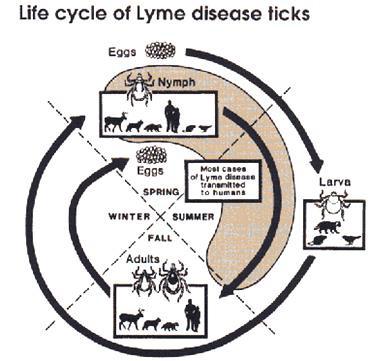
Symptoms
Dogs with canine Lyme disease will show a variety of symptoms. One of the main symptoms is limping, usually with one of his forelegs. This limping will hardly be noticeable at first, but will get much worse within three to four days. Dogs with canine Lyme disease will also have swelling in the lymph nodes of the affect limb. Many dogs will also have a high fever and a loss of appetite.
Diagnosis and treatment
Blood tests are available to assist in the diagnosis of Lyme disease. The standard blood test detects antibodies made by the dog in response to infection with B. burgdorferi. Many dogs show positive test results, but are not actually infected with the disease. A new specific ELISA recently developed and approved for use in dogs also appears to be able to differentiate among naturally infected dogs, vaccinated dogs, and dogs with cross-reacting antibodies secondary to other disease.
Dogs with canine Lyme disease will generally begin to recover within three days of being given treatment. In some cases, the disease may recur within a few weeks or months. If this happens, the dog will have to take another round of antibiotics for an extended period of time.
Prognosis and prevention
Dogs should begin to show signs of recovery two to three days after beginning treatment. However, the disease may recur within a few weeks or months; in these cases, the dog will need to return to antibiotic therapy for extended periods.
There is a vaccine for the prevention of Lyme disease. Quick removal of a tick also will help prevent Lyme disease because the tick must remain attached to the dog’s body for one to two days before the disease can be transmitted. Consult with a veterinarian about the different tick prevention products that are available, as they can be an effective way to prevent the disease.

